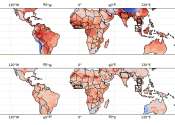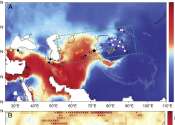Manipulating the geometry of the 'electron universe' in magnets
Researchers at Tohoku University and the Japan Atomic Energy Agency have developed fundamental experiments and theories to manipulate the geometry of the "electron universe," which describes the structure of electronic quantum ...









